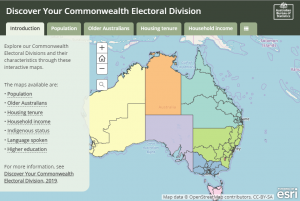The peak body for Australia’s councils has welcomed Labor’s local government plan, which provides $1 billion of new funding but omits any commitment to restore Financial Assistance Grants.

Releasing the policy five days out from the federal election on Saturday, opposition local government spokesman Stephen Jones said a Labor government would work with councils to ensure they can provide infrastructure and community services.
“Labor shares the vision of local councils to create vibrant, liveable places across Australia that provide the social amenity and community services that underpin our national prosperity and well being and is committed to working with them to achieve this,” Mr Jones said.
ALGA president David O’Loughlin said the ALP plan contained a positive recognition of the challenges to the financial sustainability of councils, which have experienced a fall in Financial Assistance Grants (FAGs) to just 0.55 per cent of tax revenue.
Although Labor was silent about restoring FAGs to their previous level of 1 per cent as sought by ALGA in their twelve-point election campaign document, it offered “welcome progress” in working with local, state and territory governments to reach an agreement on the financial sustainability of local government, Mr O’Loughlin said.
“While both major parties have yet to respond to ALGA’s call to provide a fairer level of funding to local communities through the restoration of Financial Assistance Grants funding, the ALP’s commitment to seek an agreement across the three levels of government to address local governments’ financial sustainability is progress,” he said in a statement.
NSW’s local government peak on Thursday joined Mr O’Loughlin in welcoming Labor’s “major funding commitment,” with LGNSW President Linda Scott saying that the party’s funding boost for infrastructure “would certainly help” councils. Cr Scott also applauded Labor’s pledge to fast track the creation of a circular economy.
“We welcome today’s commitments from Labor and call upon the Liberal/National Coalition to match them,” she said.
Labor’s policy also contains initiatives on road safety, waste and recycling, climate change, community facilities and Indigenous well being.
Labor’s cities policy was also backed by the Green Building Council of Australia, which said that the party’s policies aligned with both its own election platform and the key elements of Thriving Cities.
How the political parties stack-up against ALGA’s election wish list
Labor has promised to match government funding on road safety, bridge renewal, regional telecommunications and FAGs, and pledges a further $260 million for bicycle paths.
The opposition says it will also invest $60 million in a national recycling fund and provide $62 for climate adaption and coastal rehabilitation.
“Waste and recycling has emerged as a major challenge facing all councils and the ALP commitment to greater national leadership is something the local government sector and communities have been crying out for,” he said.
Cr O’Loughlin also said Labor had gone further than the Coalition in providing funding for the NT, Queensland, WA and South Australia for remote indigenous housing.
What Councils Want
- Restore FAGSs to 1 per cent of Commonwealth revenue
- Improve freight routes
- Boost safety on local roads
- Eequitable access to community services
- Protect communities form natural disasters
- Support communities in climate change response
- Promote community health
- Foster Indigenous wellbeing
- Support smart cities
- Fund a circular economy
- Tackle homelessness and affordable housing
What Labor’s promising
- Provide $9.5 billion in FAGs
- Fund a national bike path strategy, regional trourism and regional airports plan
- $2b Roads to Recovery Funding and $419m for Bridges Renewal Program
- $250m for local government infrastructure including community centres and sporting facilities
- Create a National Environmental protection Authority
- $62m to help coastal communities adapt and build resilience to climate change
- Lift the Medicare rebate freeze
- $200m Local Community Projects program
- $1.5b 10-year investment in Indigenous housing across the NT, Qld, WA and SA
- City Partnerships and $245m to address mobile blackspots, improve digital literacy and fund projects to improve connectivity in regions
- $75m Recycling and Waste Strategy
- Provide first home buyers with a 5 per cent deposit a guarantee, Develop a national plan to reduce homelessness with COAG, build 250,000 affordable homes over 10 years
What the Coalition’s promising
- Provide $12.1b in FAGs from 2022-23
- $1b infrastructure plan including $4.5b Roads of Strategic Importance initiative
- Increased funding for Roads to Recovery, Black Spot, Bridges Renewal and Heavy Vehicle Safety and Productivity Program
- $130.5m in matched funding for the National Disaster Risk Reduction Framework and $3.9b for Emergency Response Fund
- $2b over 15 years for Climate Solutions Fund
- Lift Medicare rebate freeze
- Long-term National Health Plan
- $220m investment in regional communications through the Stronger Regional Digital Connectivity Package
- $5.2b over four years in Indigenous advancement Strategy
- Provide first home buyers with a 5 per cent deposit a guarantee
- Create a recycling investment fund and $167m to increase Australia’s recycling rates
ABS unveils electorate map
The comments come as the Australian Bureau of Statistics (ABS) on Thursday released an interactive map giving voters insights into the attributes of their electorates.
The map visualises data around the nation’s 151 Commonwealth electorates, revealing crucial information such as household income, housing tenure, languages spoken and Indigenous status.

The Discover Your Electoral Division map aims to help voters use census data to make informed decisions at the polls on Saturday.
The map uses data from the 2016 Census, the 2017 Estimates Resident Population report and the latest ABS Electoral Boundaries.
Comment below to have your say on this story.
If you have a news story or tip-off, get in touch at editorial@governmentnews.com.au.
Sign up to the Government News newsletter.





Leave a Reply